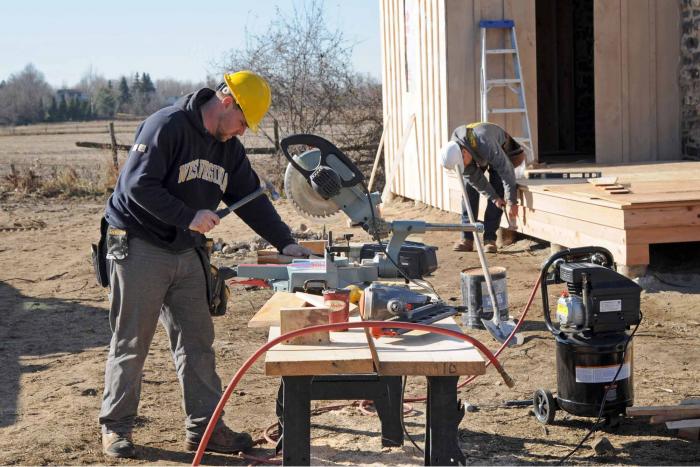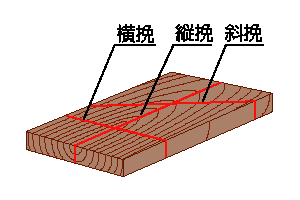
The cost of lumber is on the rise and can lead to a decrease in the profitability of retailers and contractors. To combat the rising cost of lumber, one way to keep costs down is to buy it in larger quantities. Bulk purchases from most suppliers offer significant discounts which makes them more cost-effective than purchasing small quantities or as needed.
Checking for imperfections
Although some imperfections in lumber are beautiful, it is important to avoid them for structural integrity. Most defects can be attributed to problems in stacking, cutting or drying. A naturally occurring knot is an exception. Knots (also known as "bends") are a form of circular imperfection in wood. Knots are caused by broken tree branches and are not structurally debilitating. In order to choose lumber that will last for your next project, check for the following defects:

Choosing the right wood for your project
The cost of the project, size and preferences will all play a role in choosing the right wood. Woods that are the least expensive are usually the best for beginners. Soft maple, poplar, and pine are relatively inexpensive and easy to work with. Hardwoods such as oak or elm are more expensive. You can choose the right wood for your project by considering the wood's quality and its potential uses.
Choosing the right mill
When buying lumber for your next project, there are many options available. Even though 2 x4 lumber is cheaper at your local big-box stores, you may end up paying more for a better piece. A sawmill may use six passes to cut 2 inches of lumber. This means that smaller, family-owned mills may not be as competitive in pricing. A mill with a strong reputation is better for high-quality wood.
The right size
There are many things you should consider when buying lumber. The purpose of your lumber will influence the type that you choose. On the lumber's sides, you will find its size and amount stamped. The information it contains is important. This guide will show you how to find that information. Below are some suggestions to help you make the right decision.

Selecting the right grade
Look for a stamp that will tell you the grade of lumber you are buying when you purchase it. This will provide information about the mill designation and the grading agency that you purchased the lumber. The grade you purchase will depend on what your requirements are, from structurally sound to finished. It is also important to consider the color of the wood, which will affect the appearance of the project.
FAQ
Where do I get my woodworking supplies?
There are many places you can get everything you need, and you don't have to go far. You could also visit hardware stores in your area or shop online at Amazon.com.
You can also check garage sales and flea markets for old furniture and other materials you can reuse.
What wooden items do you sell well?
The most successful wooden items are made from sustainable wood.
Oak, cherry and mahogany are the most sought-after wood types for furniture.
These woods not only have great strength, but also beautiful patterns and colors. They can also last for years if they are properly cared for.
To prevent moisture damage, wood furniture should always first be painted. This covers all surfaces, drawers included, as well as doors and handles.
If you want to make sure that your furniture lasts as long as possible, then you should choose a paint that is resistant to water.
A high-quality oil-based primer should be used, followed by two coats with top coat. Depending on the amount of wear, you may need several coats.
You should avoid using aerosol paints or spray cans. These products contain solvents which evaporate quickly and leave behind harmful fumes.
You can learn how to woodwork.
The best way to learn anything is by doing. Woodworking requires patience, practice and skill. Any craft requires patience to master.
It is the best way to learn to do something is to actually do it. Start small and use what you learn.
Where can I find free woodworking plans?
You don't need to purchase any books or magazines to find free woodworking plans. You just need to search Google. You can search Google for "free woodworking" and hundreds of websites will appear allowing you to download plans.
Statistics
- The best-paid 10 percent make $76,000, while the lowest-paid 10 percent make $34,000. (zippia.com)
- Woodworkers on the lower end of that spectrum, the bottom 10% to be exact, make roughly $24,000 a year, while the top 10% makes $108,000. (zippia.com)
- Average lumber prices rose about 600 percent between April 2020 and May 2021. (familyhandyman.com)
- Overall employment of woodworkers is projected to grow 8 percent from 2020 to 2030, about as fast as the average for all occupations. (bls.gov)
External Links
How To
How to properly use a handsaw
To cut wood into pieces, a handsaw is used. There are many types of handsaws: jigsaws and table saws; band saws; sabersaws; crosscut saws; miter saws; and rip-saws. A handsaw can be made of metal or other plastic. It cuts through material such as wood and plastics.
The best thing about a handsaw is the ability to make precise cuts at all angles and without needing adjustment. Sharpening them is easy, unlike with power tools. There are also some drawbacks. You must be careful when transporting them, as they can be heavy and bulky. Additionally, if they are unfamiliar, it is possible to injure oneself.
There are many ways that you can use a handsaw. While cutting, keep your fingers away from the blades. If you don't, you might get hurt. To hold the saw properly, your thumb should be in contact with the blade. This way, you won't accidentally touch the blade.
Never place anything under a piece of wood that you're cutting with a handsaw. The blade could slip if you do this. Always check the area where you want to cut before starting. Make sure no nails or screws are hidden beneath the wood.
When working with a handheld saw, safety goggles are essential. Safety glasses protect your eyes from dust and make it easier to see what the hand saw is doing. Safety glasses can also be useful as they protect your skin from flying debris.
Before you start working with a saw, it is important to learn how to use it safely. You can then practice until you are confident enough to cut things. You'll soon be able to cut any item once you have mastered the basics.